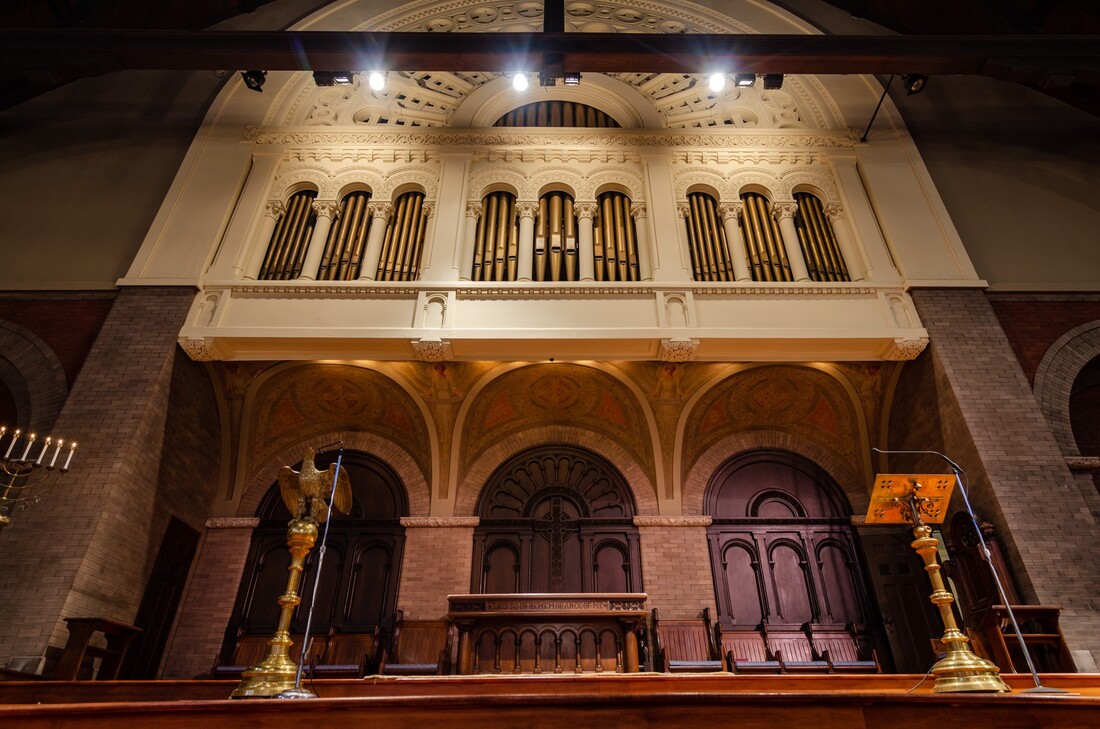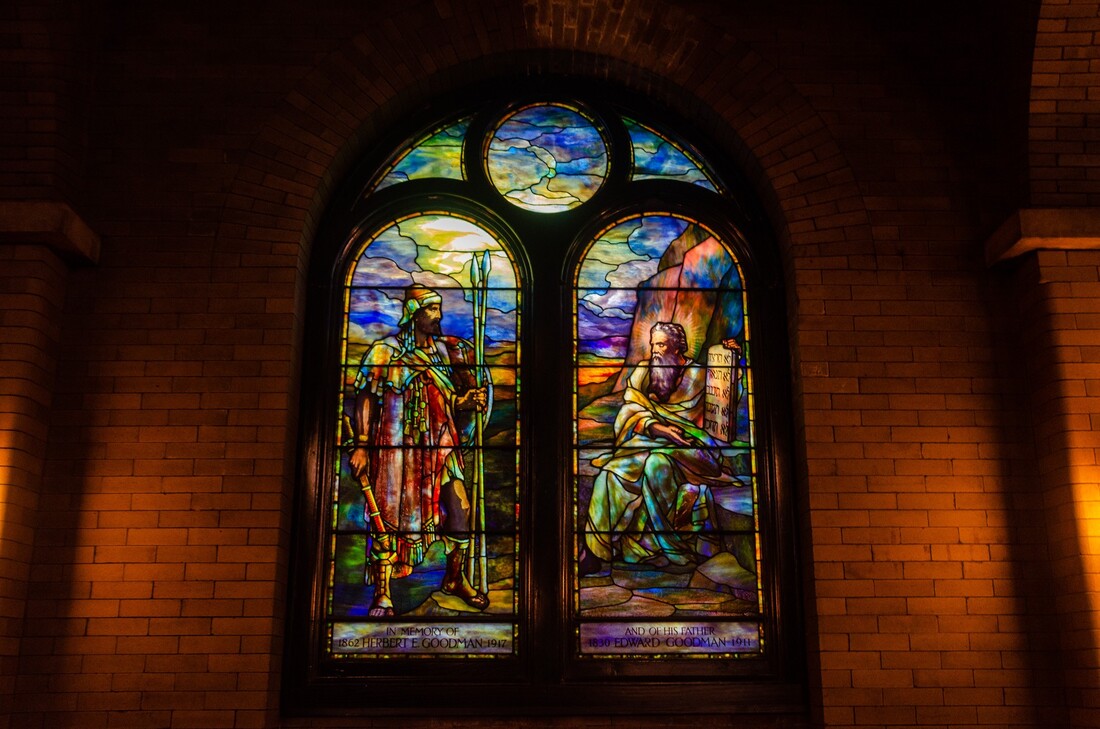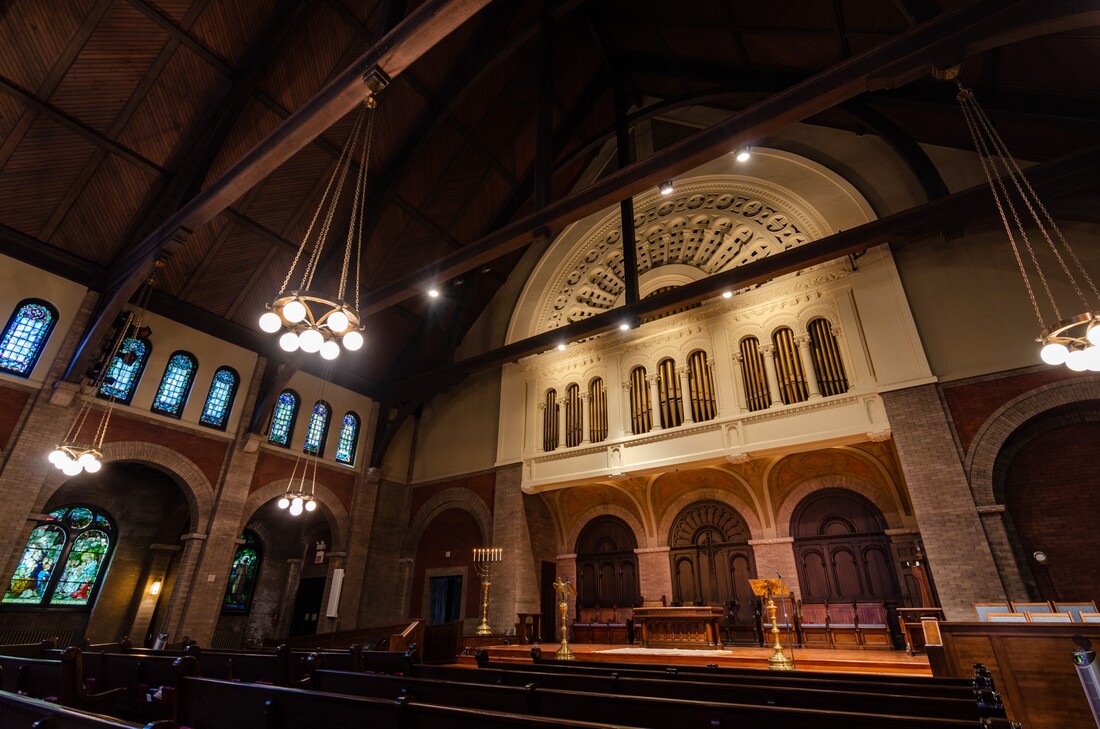Formidable Shelter & Radical Accessibility
|
Our chancel, photo by Eric Allix Rogers.
|
NPR commentator Jay Allison once remarked that the sanctuary of Hyde Park Union Church had that “big-shouldered Chicago” feel. Certainly the church’s red sandstone exterior and its interior of limestone, brick and dark oak lend to the perception of permanence and shelter. Its massive crossbeams are relieved, however, in architect John Gambel Rogers’ 1906 design by Romanesque arches which line the aisles and repeat in the windows and by the warmth of a chancel canopy with a faux mosaic of an angelic host bearing the words “Alleluia! For the Lord God omnipotent reigneth” (Revelation 19:6).
The sanctuary is also a rare blend of high and low church sensibilities. Appointed with the eclectic mix of a carved Celtic cross, Sabbath menorah, Johannine lectern, pedestal pulpit, and raised Communion Table. The sanctuary – built as a Baptist church – retains a large formal baptismal pool at the southwest corner of the chancel. Although the peaked ceiling is as high as the center aisle is long, the overall effect of the room is warm, quiet, and peaceful. One enters the sanctuary discreetly, from vestibules at the rear on either side of the room, in contrast to the central doorway of typical cathedral architecture. Beneath the sheltering arches along the sanctuary walls, the entire room is in full view. Worship is led from a raised but exposed chancel with no separation from the people. And, throughout the room, 8 foot stained glass windows may be viewed at eye level, and even touched, in an openness which art historian Rolf Achilles has referred to as “radical accessibility.” |
Legacy and Future in Stained Glass
|
Joshua and Moses, photo by Eric Allix Rogers.
|
Stained glass by Louis Comfort Tiffany, Franz X. Zettler, and C.J. Connick studios was donated to the church by its members and their families between 1906 and 1961. All the windows, with the exception of one, were gifts made in the distinctly American tradition of memorializing beloved church leaders and members in the artwork of the church building. Because of their shared history in the American Baptist Churches, much of the early leadership of the church overlapped with the leadership of the University of Chicago, and many of the window dedications reflect the development of the two institutions.
The windows also reflect the values of the church: the centrality of scripture in the giving of the Law, the four Gospel writers, and the preaching of Paul; the place of children and young people through Jesus’ welcome of the children, the friendship of Jonathan and David, and the memorial windows for young lives lost in the Great War and the second World War. The East Wall with the massive Rose Window underscores our mission and vision as a church: Loving God and Loving Neighbor in fellowship with the Communion of Saints. The Rose Window celebrates the prophets and apostles upon which Christ, the cornerstone, built the church (Ephesians 2:20). The two windows on each side of the Rose Window signify “The Alternation of Devotion and Service,” and the lower windows illustrate the parables of Jesus. Together, all of these windows highlight the importance of ethical living and our calling to become the beloved community. |
Come and see!
|
Our sanctuary, photo by Eric Allix Rogers.
|
The best way to appreciate our windows and their historical, artistic, and theological significance is to experience them firsthand. We encourage you to visit our building and to join us for Worship any Sunday at 10 a.m. Anyone on our staff would be happy to show you around!
|



